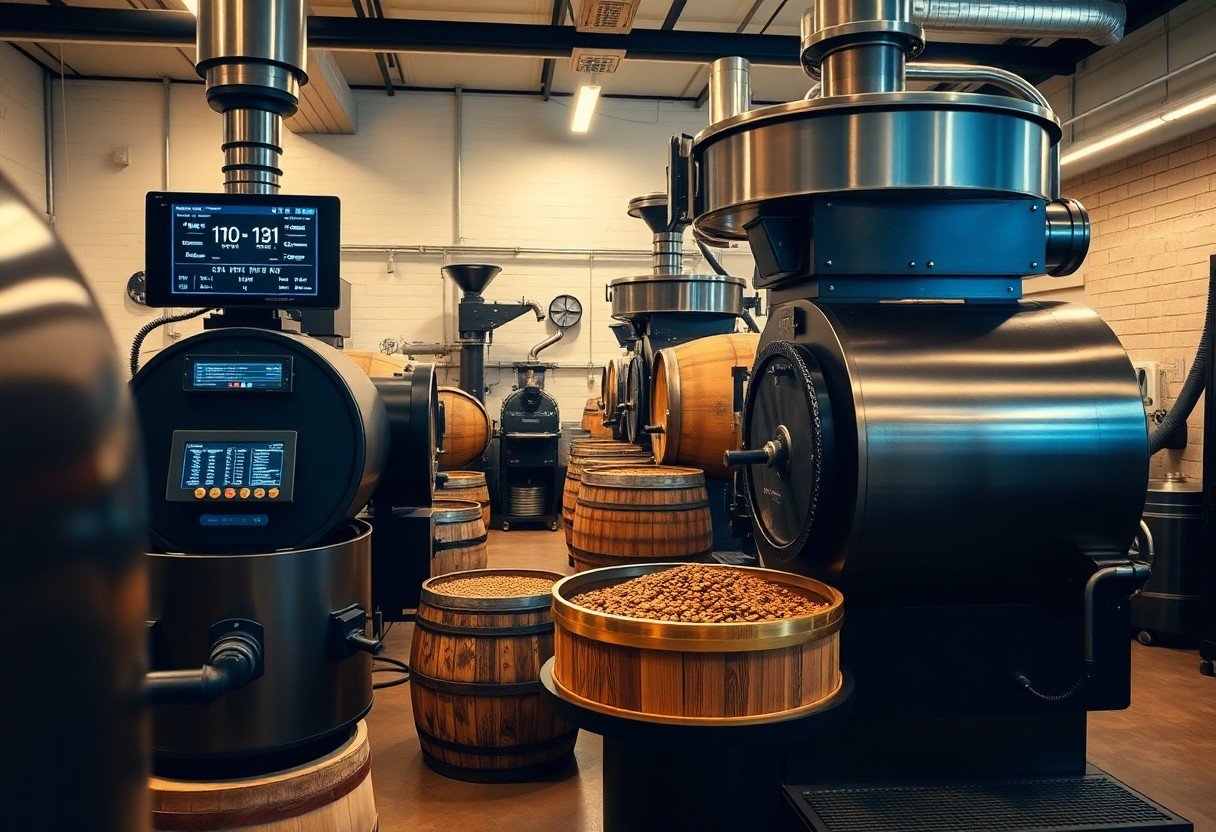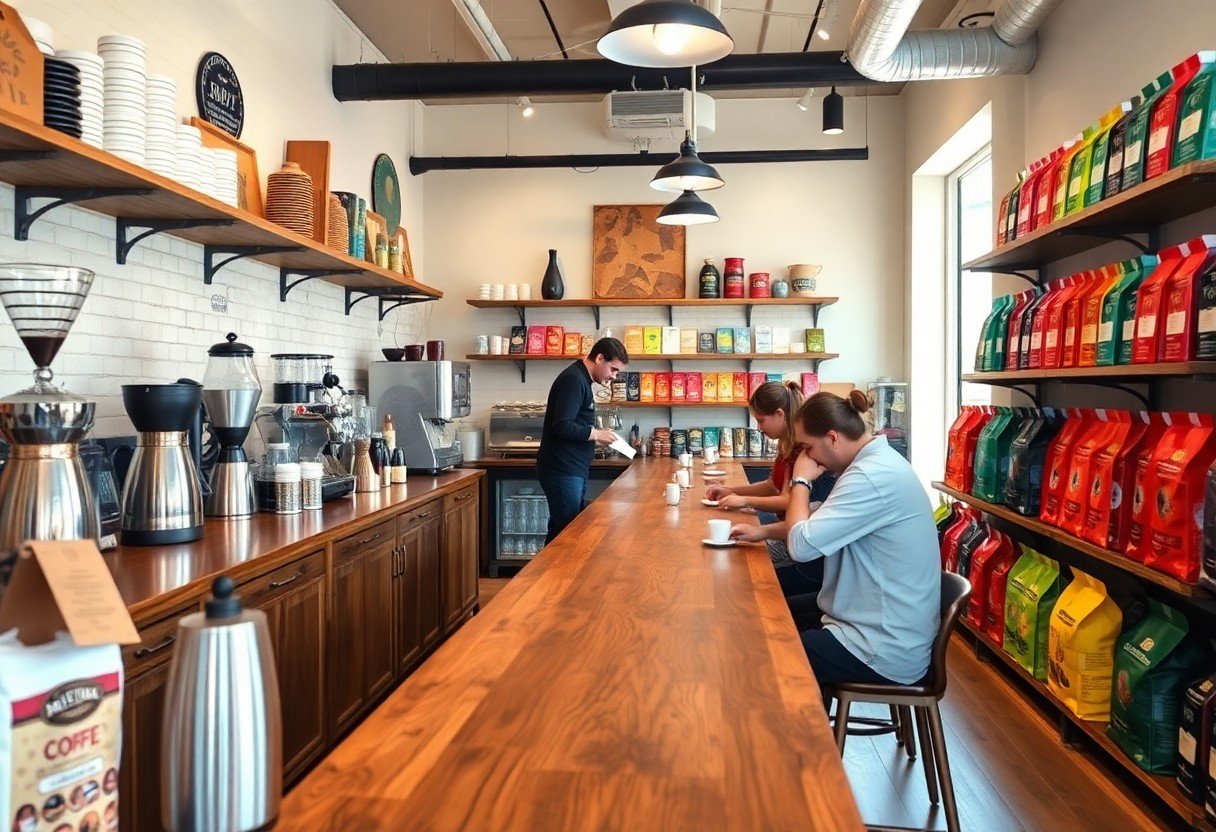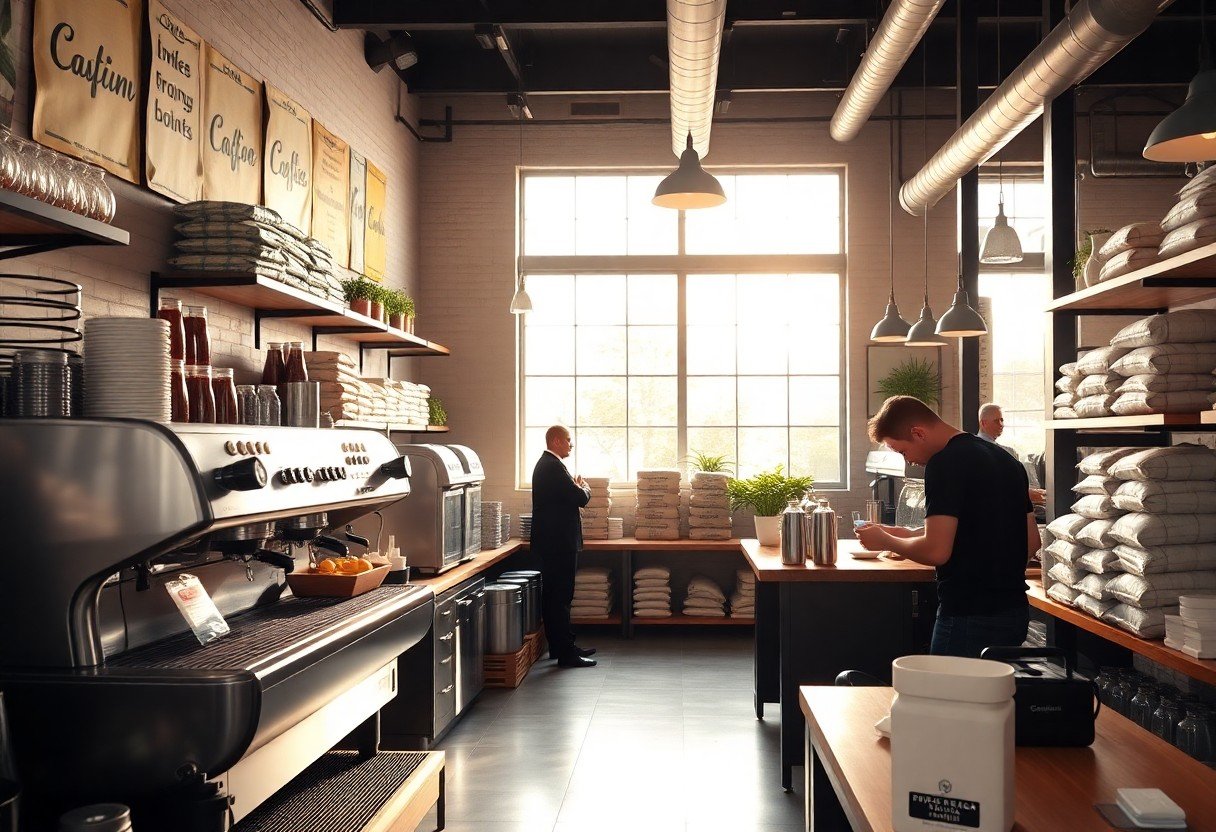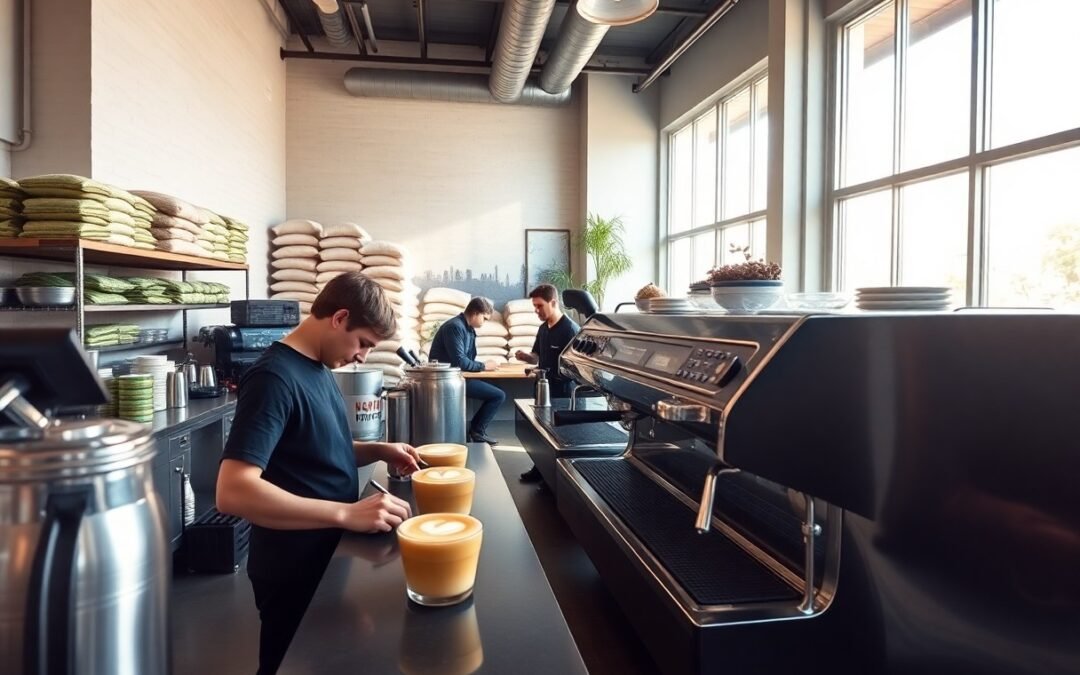Coffee culture in Australia is evolving, with new roasting techniques and flavor profiles redefining the experience. To immerse yourself in these innovative trends, you’ll want to explore local roasteries, attend tastings, and stay updated on the latest brewing methods. This guide will provide you with crucial tips to navigate Australia’s diverse coffee landscape, helping you enhance your appreciation and knowledge at every turn.
Brewing Innovation: The Latest Techniques in Coffee Roasting
The Rise of Precision Roasting
Your approach to coffee roasting can significantly impact the final flavor profile of your brew. Precision roasting leverages advanced technology and analytical tools to monitor every stage of the roasting process meticulously. For example, temperature variations are tracked in real-time using reliable sensors, allowing you to fine-tune the roast based on specific variables, such as bean moisture or density. This method not only enhances consistency but also enables you to replicate successful batches with greater accuracy.
Exploring Flavor Profiling and Sensory Analysis
Flavor profiling allows you to identify the specific tasting notes and characteristics that define a coffee bean. Utilizing sensory analysis, you can uncover complex flavors through cupping, a practice where coffee is brewed and evaluated in a standardized manner. Leading roasteries are employing trained tasters to assess factors such as aroma, acidity, body, and aftertaste, providing valuable feedback that informs roasting decisions. Your understanding of these flavor elements will enable you to craft blends that resonate with your target audience.
Innovative coffee businesses are investing in technology that complements traditional sensory analysis. For instance, tools like gas chromatography can identify chemical compositions in coffee that correlate with specific flavor profiles. With ongoing developments in the science of coffee, allowing you to explore new territories in flavor and aroma that previously remained unexplored. For roasters aiming to differentiate themselves in a saturated market, mastering both traditional and innovative profiling techniques will create a lasting impact on the final product.
Sustainable Sourcing: The Future of Coffee Bean Procurement
Direct Trade Models and Ethical Considerations
Engaging in direct trade allows you to cut out intermediaries, providing roasters better prices while ensuring farmers receive a fair wage for their labor. Brands like Intelligentsia and Counter Culture have established models that emphasize transparency and quality, encouraging you to know exactly where your beans come from and the conditions under which they were grown. This direct relationship often leads to higher quality beans and fosters a sense of community and responsibility in the coffee industry.
Through these direct trade partnerships, you can support ethical farming practices that prioritize environmental stewardship and social equity. Coffee roasters often share the story behind each batch, allowing you to appreciate the unique characteristics of the beans based on their origin. By choosing brands that prioritize direct trade, your purchasing decisions contribute to sustainable practices and promote better living conditions for farmers and their families.
The Impact of Climate Change on Bean Selection
Climate change is altering growing conditions for coffee, pushing you to consider newer cultivars that withstand rising temperatures and shifting rainfall patterns. Factors such as increased pests, diseases, and unpredictable weather patterns directly affect yield and quality, leading to a shift in the types of beans you may find on the market. Consequently, varieties like Arabica are being reconsidered in favor of more resilient species like Robusta or hybrid varieties that promise better adaptation to changing climates. Your awareness of these trends can guide your purchasing choices, favoring those brands prioritizing climate-resilient options.
Additionally, many roasters are now more actively involved in research and development efforts to breed and select coffee beans that can thrive under emerging environmental stresses. Collaborative efforts between scientists, producers, and roasters are becoming common, ensuring that you’re not only enjoying a great cup of coffee but also supporting initiatives that prioritize sustainability amidst the looming challenges posed by climate change.
The recognition of climate challenges has prompted coffee producers to adapt their selection processes, emphasizing resilience over traditional varieties. For you, this means diversifying your palate and exploring uniquely crafted blends that take advantage of innovative growing techniques, assuring the maintenance of quality coffee production in unpredictable climates. Understanding these shifts can help enhance your coffee experience while contributing to the larger ecological conversation surrounding sustainable agriculture practices.

Technology Meets Tradition: Equipment Advancements in Roasteries
Smart Roasting Machines: Efficiency and Quality
Smart roasting machines have revolutionized the coffee industry, combining the precision of technology with the art of roasting. With sensors that monitor temperature, airflow, and time, these machines deliver consistent results each batch. Your ability to replicate successful roasts improves dramatically, allowing you to fine-tune profiles that resonate with your customers. Brands like Probat and Diedrich have integrated advanced software solutions into their models, enabling real-time adjustments during the roasting process, which enhances both efficiency and flavor development.
These innovations not only streamline production but also reduce waste. For example, some machines can automatically reset parameters based on prior roasting data, ensuring that you maximize each batch’s potential. A typical smart roaster can save up to 30% in energy compared to traditional systems, making it a sustainable choice for environmentally conscious roasteries. Investing in smart roasting machines allows you the luxury of time to explore new blends and flavors while maintaining high-quality standards.
Digital Tracking and Data-Driven Decisions in Roasting
Utilizing digital tracking systems plays a pivotal role in modern roasting practices. By implementing software that logs data throughout the roasting process, you gain insights into every variable that influences flavor. This includes detailed reports on temperature fluctuations, humidity levels, and even barometric pressure during roasting, which can significantly impact the final cup profile. Leading roasteries often integrate these data points with customer feedback to adjust their offerings, ensuring they meet market demands while honing in on specific flavor notes that consumers crave.
Your ability to make data-driven decisions enhances both quality control and production efficiency. With platforms such as Cropster or Artisan, you can evaluate historical data to identify trends and optimize your recipes consistently. Imagine being able to track hundreds of variables across multiple batches and using that intelligence to refine your roast profiles, reduce inconsistencies, and elevate your offerings—this is the future of coffee roasting. The integration of technology transforms not just your operations but also the overall coffee experience for your clientele, making each cup not just a beverage but a reflection of your craft.

Community Engagement: Building a Coffee Culture
Initiatives for Local Roasters and Coffee Shops
Local roasters and coffee shops are increasingly implementing initiatives to strengthen their ties with the community, fostering a unique coffee culture. Programs like subscription services for exclusive blends or loyalty cards not only incentivize repeat customers but also encourage you to explore new flavors. Many establishments have started collaborations with local artists to showcase their work in shops, creating inviting spaces that celebrate regional talent while enhancing your coffee experience.
Educational workshops, where you can learn about brewing techniques or coffee origins, are becoming popular as well. Providing customers with knowledge about the beans they consume establishes a deeper connection. Some roasteries have even adopted “coffee appreciation” classes, allowing you to taste and distinguish different coffee profiles. These activities create an engaged community of coffee lovers eager to learn and participate.
Events and Collaborations that Foster Connection
Coffee festivals and cupping sessions organized by local roasters serve as vital platforms for engaging with the community. These events not only showcase the unique flavors of various coffee beans but also allow you to network with fellow enthusiasts. Roasters often collaborate with cafes to host thematic events, such as a “Barista Jam,” where you can witness skilled baristas compete and share insights on their craft. Such initiatives provide an opportunity to celebrate local talent and deepen your appreciation for the art of coffee making.
The impact of these events extends beyond mere enjoyment; they cultivate a sense of belonging and pride in the local coffee scene. You might find that participating in these gatherings leads to lasting friendships and connections, as shared experiences are an undeniable catalyst for community building. Many roasters have reported increased customer loyalty and engagement as a consequence of these collaborative efforts, emphasizing the value of connection in fostering a rich coffee culture.

Trendspotting: Key Players Shaping the Australian Coffee Landscape
Interviews with Innovative Roasters
Engaging with some of the top roasters in Australia reveals a wealth of insights about the evolving coffee scene. Take, for instance, your conversation with the founders of Market Lane Coffee, who emphasize the importance of sustainable sourcing practices. Their commitment to direct trade ensures that farmers receive fair compensation, which enhances the quality of the beans. Coupled with their focus on single-origin coffees, you learn how this approach not only elevates the coffee experience for consumers but also makes a meaningful impact on communities worldwide.
Similarly, an interview with the team at Proud Mary highlights their dedication to innovation in flavor profiles. They often experiment with processing methods and roasting techniques to achieve unique taste notes. You gain a deeper understanding of how these creative processes contribute to consumer engagement, as offerings like their limited-edition collaborations draw in inquisitive coffee drinkers eager to explore new flavors.
Analyzing Market Shifts and Consumer Preferences
Current data indicates a significant shift in consumer preferences towards specialty coffee, with sales in this segment increasing by over 40% in the past five years. You pay attention to how the demand for unique flavor profiles and ethically sourced beans has prompted many roasteries to diversify their offerings. This trend not only drives competition but also pushes traditional coffee drinkers to expand their palates, exploring options like cold brews and nitro coffees that were previously less common.
As you analyze these market shifts, consider the implications for your own coffee journey. With consumers increasingly favoring quality over quantity, roasters are innovating by introducing new brewing methods and transparency in sourcing. Brands that prioritize engagement through education, like hosting tasting events or offering workshops, are finding success in fostering a loyal customer base eager to understand the intricacies of their coffee. This evolution showcases a vibrant landscape, where exploration and experimentation reign supreme.
Summing up
Drawing together the insights on innovative coffee roastery trends in Australia, you have the opportunity to engage with a dynamic and evolving market. By understanding the influence of sustainability, embracing new brewing techniques, and exploring unique flavor profiles, you can better position yourself within the industry. Keep an eye on emerging small-batch roasteries and read consumer demand patterns to discover what resonates with your clientele.
Your journey into the world of innovative coffee roasting should encourage you to experiment and adapt. Consider participating in local coffee events and collaborating with other professionals to exchange ideas and best practices. By doing so, you enhance not only your knowledge but also contribute to shaping the future of coffee culture in Australia.
FAQ
Q: What are the current innovative trends in Australian coffee roastery?
A: Current trends include the rise of specialty coffee, sustainability practices, direct trade sourcing, unique processing methods, and the integration of technology in roasting processes.
Q: How can I identify a specialty coffee roastery?
A: Look for roasteries that emphasize quality sourcing, provide detailed tasting notes, offer single-origin options, and maintain a focus on ethical practices.
Q: What is the significance of sustainability in coffee roasting?
A: Sustainability ensures environmentally friendly practices, reduces carbon footprints, and supports ethical treatment of farmers, enhancing the overall quality and reputation of the coffee industry.
Q: How is technology transforming Australian coffee roasteries?
A: Technology is enhancing precision in roasting with software for profiling, improving inventory management, and enabling better customer engagement through online platforms and subscriptions.
Q: What role does customer feedback play in developing coffee trends?
A: Customer feedback drives innovation by informing roasters about preferences, encouraging experimentation with flavors, and shaping product offerings to align with evolving market demands.

